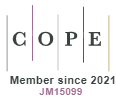Editorial Instructions
When encouraging you to publish in the Biuletyn Szadkowski, please take into account the following guidelines.
Detailed editorial guidelines for authors: EDITORIAL INSTRUCTIONS
Publication volume:
1. article up to 15 standard pages;
2. review article up to 10 pages;
3. notes and reports up to 5 pages.
The text of the article should be accompanied by:
- short biographical information (name and surname of the author, title and academic degree, place of employment and possibly a list of functions held, e-mail address and ORCID number in the case of research workers);
- summary in Polish (max. 1000 characters with spaces) and English (optional);
- a list of keywords in Polish and English defining the subject of the article;
- bibliography arranged alphabetically.
Text formatting:
1. Font: Times New Roman / 12 points.
2. We use the verbal and numerical notation of dates: October 22, 1808. Please write the words year and century using abbreviations, e.g. in 1809, in the mid-18th century.
3. We use abbreviations of words: among others, for example, about: among others, e.g., ok.
4. Ways of writing numbers: please write the numbers from 0 to 9 verbally and numerically from 10 and up.
5. If the surname appears in the text for the first time, it should be given with the full name, while the same surname appearing in the text again should be given with the initial of the name.
6. Please do not use spaces or tabs to indent paragraphs, do not remove hanging conjunctions, or use any special formatting.
The condition for publishing an article is to transfer the authors' rights to the journal/publisher (details specified in the agreement with co-authors).
All articles published in the Biuletyn Szadkowski are peer-reviewed.
Please send texts in electronic version (Word for Windows format) to the journal's address: biuletyn.szadkowski@geo.uni.lodz.pl
Digital accessibility - alternative texts
Please include alternative descriptions with all journal's illustrations.
An alternative text is textual information about what you see in a graphic element that is relevant to the text or topic that the element illustrates. Alternative texts are read by a screen reader and allow people with blindness or vision impairment to see what is, for example, in a given graphic, photo or chart. Graphic elements without an alternative description will be read by the assistive software for visually impaired people as the word ‘graphic’, so they will not get any other information that this ‘graphic’ is supposed to convey.
What should an alternative text look like?
- Above all, the description should be concise and succinct – try to describe the graphic as accurately as possible, doing so in the shortest possible way (the optimum length of an alternative text should not exceed 250 characters)
- It should describe the meaning and content of the graphic element in question
- It should contain key information for the viewer (e.g. a repetition of the content written on the graphic, or in the case of photos, a description of the most important elements building the message: “Rector presenting the habilitation diploma to Dr Anna Kowalska”)
- When creating alternative texts for charts and infographics, remember to include, in addition to the title, a summary and description of the trends resulting from the graphic. Often, due to the length and level of complexity of the data being described, it is worth including the chart description in the proper body of the text, below the graphic itself
- You do not need to use alternative descriptions for graphics that are purely decorative (in which case mark them as decorative by selecting the “Mark as decorative” option).
Function of adding alternative description in Microsoft Word
To add alternative text for graphics/charts added into a Microsoft Word document, right-click on the object and select “Format image” -> “Accessibility” -> “Alternative text”; or “Review” -> “Check accessibility “-> “Alternative text”
For graphic elements that only have a decorative function in the document, also fill in the alternative text field – instead of the content in the “Alternative text” field, tick the “Mark as decorative” option.




